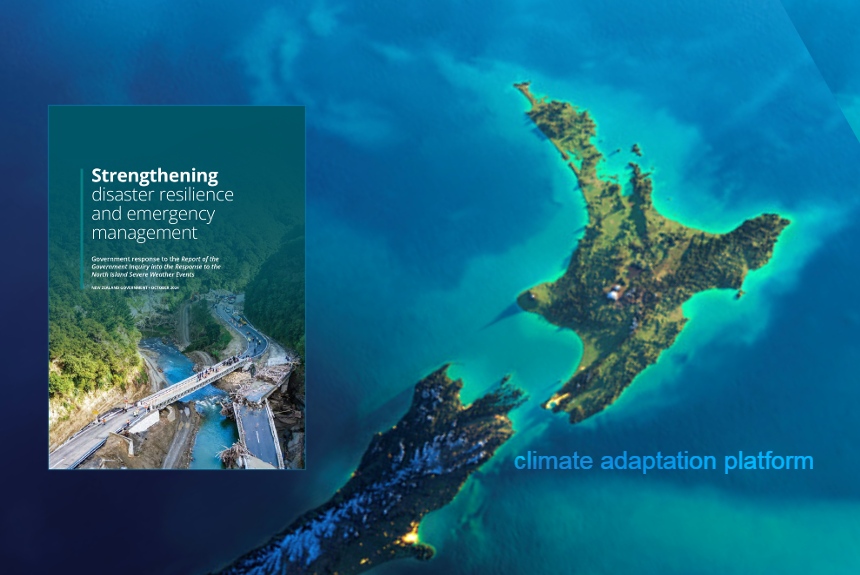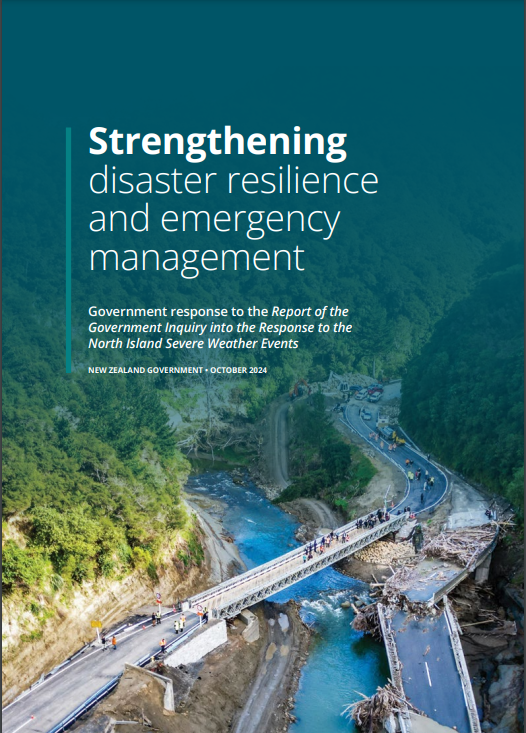In just six weeks, the North Island of New Zealand experienced three catastrophic events that significantly impacted the region. The sequence began with Cyclone Hale, which struck from 8 to 12 January 2023.
This was followed by a period of heavy rainfall known as the Auckland Anniversary deluge, which lasted from 26 January to 3 February 2023. Finally, Cyclone Gabrielle hit the area from 12 to 16 February 2023, compounding the challenges faced by the island’s communities.
Cyclone Hale hit the North Island on 9 January. The Gisborne region was the most impacted, with the cyclone flooding paddocks and roads. Slash and debris from forestry, a major industry in the region, carried by heavy downpours damaged bridges and clogged creeks and rivers, significantly damaging the landscape.
An atmospheric river caused the Auckland Anniversary heavy rainfall in late January to early February. They brought flooding to Auckland and other areas; four people died from flash floods and landslides, and thousands of homes were destroyed.
Another cyclone, Gabrielle, devastated parts of the North Island of New Zealand from 11 to 17 February. A state of emergency in many parts of the North Island just before and during the storm. Fifteen people died, and one person is still missing. According to NZ Foreign Affairs & Trade, Cyclone Gabriael was the country’s costliest non-earthquake natural disaster, with economic losses expected to exceed the $2 billion -$4 billion losses (Cyclone Gabrielle’s impact, 2023).
“Over the last few years, we’ve seen the scale and frequency of these disaster events increase – and that trend will only continue. Recent events such as Cyclone Hale, the Auckland Anniversary heavy rainfall, and Cyclone Gabrielle (the North Island Severe Weather Events or NISWE) showed us the serious, long‑term impacts these events have on our communities,” says New Zealand’s disaster resilience and emergency management, Emergency Management and Recovery Minister Mark Mitchell in a government press release (Strengthening NZ’s emergency, 2024).
The impacts of these three natural disasters on the country will be felt for years to come. This has led to a government inquiry into the country’s emergency management system’s response to these triple North Island severe weather events. The government response inquiry is referred to in the report as the NISWE Inquiry. The findings of the NISWE Inquiry are outlined in the report “Government Inquiry into the Response to the North Island Severe Weather Events”, released in March 2024.
According to the report, the Inquiry takes a high-level view and does not seek to apportion blame to individuals or entities. Its stated purpose is to “ensure that New Zealand’s emergency management system design is appropriate to support readiness for, and responses to, future emergency events” by identifying lessons from the three major natural disasters.
The inquiry found that “the events stretched the emergency management system beyond its limits. The Inquiry considers that, as a country, we are not adequately prepared for severe weather events or large-scale emergencies affecting multiple regions at once.”
Issues and recommendations for change from the NISWE Inquiry:
- There was a major disconnect between communities and emergency management agencies. Community members felt their efforts to support their communities were necessary due to a failure of the official emergency response. In contrast, emergency management agencies saw the community response as a critical part of the official emergency response.
Recommendation: Put people and their communities at the heart of emergency management. - Despite iwi and Māori capability and expertise, they do not have a formal legislated role in emergency management, and there is distrust by some iwi and Māori towards emergency management agencies.
Recommendation: Recognise the role of iwi and Māori throughout the system - Councils face significant constraints in delivering their emergency management responsibilities.
Recommendation: Local government is at the coalface of readiness and response - Existing expertise is underutilised across the emergency management agency. Furthermore, NEMA is a small agency with a broad remit, meaning it cannot realistically deliver on aspects of its current roles and cannot make the most of its strengths. Its role should be refocused and draw more attention to other government agencies.
Recommendation: Make better use of national resources. - There is a need for an increased focus on readiness and investment in risk reduction and readiness.
Recommendation: Increase the focus on readiness and risk reduction.
In October 2024, the New Zealand government released the report titled “Strengthening Disaster Resilience and Emergency Management” in response to the findings of the NISWE Inquiry.
The document discusses the improvements and transformation the country’s emergency management system needs to address the issues identified in the NISWE Inquiry and the increasing pressures from extreme natural events.
The report outlines the programme of change it plans to deliver across five focus areas:
Focus Area 1: Implement a whole-of-society approach to emergency management. This includes developing a comprehensive and ongoing national public readiness programme and recognising and enabling the significant contribution of iwi and Māori in emergency management.
Focus Area 2: Support and enable local government to deliver a consistent minimum standard of emergency management across New Zealand. This includes the National Emergency Management Agency (NEMA) increasing provision to local authorities, setting the delivery of emergency management standards, and ensuring that they are met.
Focus Area 3: Professionalise and build the capability and capacity of the emergency management workforce.
Focus Area 4: Enable the system’s different parts to work better nationally. This includes clarifying national-level roles and responsibilities and strengthening leadership in risk reduction, readiness, response, and recovery.
Focus Area 5: Drive a strategic focus on investment and implementation. Ensure a well-governed approach to strengthening disaster resilience and emergency management and a detailed “roadmap” to deliver this.
You can read more details of the reports by following the links in the “Source” section below.
Source:
Cyclone Gabrielle’s impact on the New Zealand economy and exports – March 2023. New Zealand Foreign Affairs & Trade. Retrieved from https://www.mfat.govt.nz/en/trade/mfat-market-reports/cyclone-gabrielles-impact-on-the-new-zealand-economy-and-exports-march-2023
Report of the government inquiry into the response to the North Island severe weather events. (2024 March). Retrieved from https://www.dia.govt.nz/diawebsite.nsf/Files/Government-Inquiry-into-Severe-Weather-Events/$file/Report-of-the-Government-Inquiry-into-the-Response-to-the-North-Island-Severe-Weather-Events.pdf
Strengthening disaster resilience and emergency management. (2024, October 10). National Emergency Management Agency. Retrieved from https://www.civildefence.govt.nz/resources/news-and-events/news-and-events/strengthening-disaster-resilience-and-emergency-management
Final report of the Government Inquiry into the Response to the North Island Severe Weather Events. (2024, April 23). Department of Internal Affairs. Retrieved from https://www.dia.govt.nz/Government-Inquiry-into-the-Response-to-the-North-Island-Severe-Weather-Events




Leave a Reply